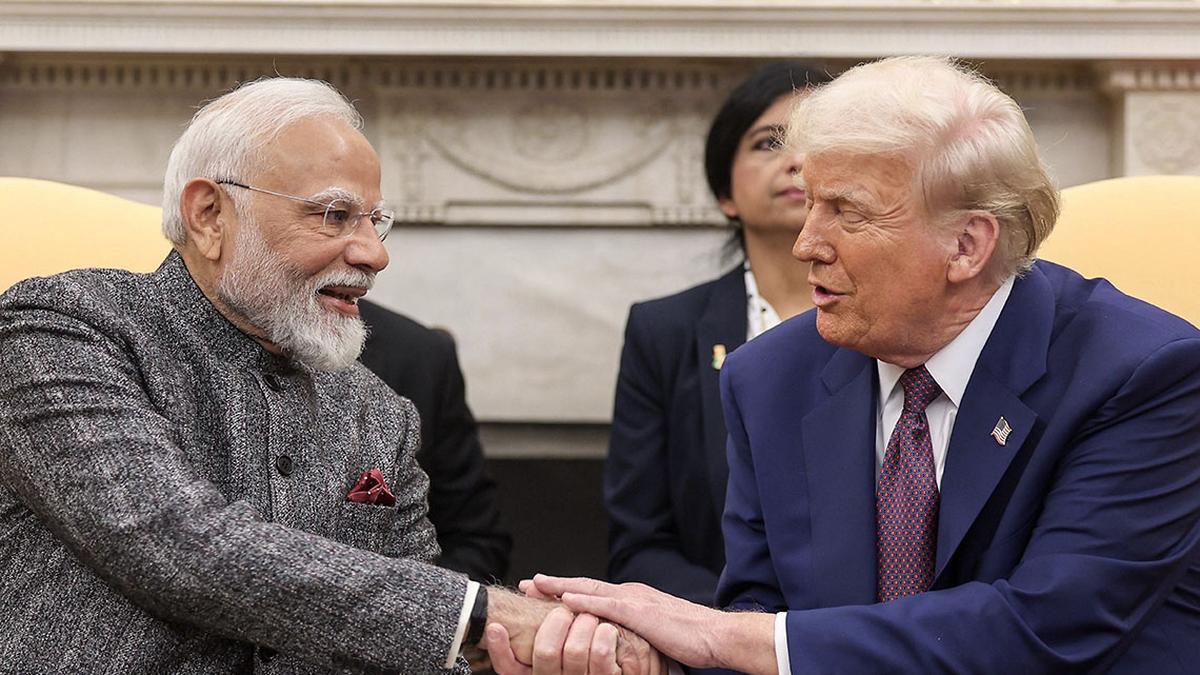What is going wrong with India-U.S. ties, often celebrated by both sides as a definitive partnership of the 21st century? Is this just a glitch caused by a strident strain of American nationalism and its volatile champion, President Donald Trump, or is the current turmoil a sign of structural tensions that had been simmering beneath the rhetoric?
Last week, only days ahead of the meltdown, this is how a State Department official described the prospects of ties with India to The Hindu: “The U.S.-India relationship is both strong and a high priority for the administration. The U.S. has long-term, strategic interests in partnering with India, including cooperating on space, defence, energy, trade, and technology. In the first six months of this administration, President Trump and Prime Minister [Narendra] Modi announced the COMPACT Initiative, and we’ve seen numerous high-level touch points between our leaders from the White House to cabinet officials. This shows the dedication the Trump administration has to the U.S.-India relationship.”
Watch | Analysing the economic and strategic impact of Trump’s tariffs on India
And then the cracks came out in the open, and how. While the above statement reflects an optimistic strand — Secretary of State Marco Rubio shares this view, going by his past statements — a more sceptical approach towards India is gaining currency among the influencers of American strategy in Washington DC. They point to structural factors that could derail the gains made after a nasty showdown between the two countries after Pokhran 2 in 1998. A recent article by Ashley J Tellis titled ‘India’s Great-Power Delusions’ is an example. Mr. Tellis used to be a strong votary for American ‘strategic altruism’ towards India.
Also Read | India, Russia can take their ‘dead economies’ down together: Trump
Strategy in both India and the U.S. is now hostage to the fickle sentiments of respective nationalist audiences. In this game, the U.S. and India are not equal. There is a fundamental conflict between India’s need to constantly advertise itself on the world stage and American scepticism of such power projections by anyone else, friend or foe. India used to maintain a benign strategic demeanour, articulating its ambitions in terms of human development, and carefully calibrating its claims for a larger global role. There was a bipartisan view that India’s rise would be a global good. The rise of America First splintered American strategic outlook, and now only one part of it continues to be optimistic about India, while a strong strand is of concern.
India sceptics
These sceptics range from those who see an illiberal turn in India’s trajectory to someone like Senator Lindsay Graham, a Trump acolyte. The India First foreign policy of Prime Minister Narendra Modi sought to be more assertive internationally and also adhere to — not abandon — India’s traditional path of strategic autonomy. India’s new normal, which predicts military strikes in response to terrorism, is difficult for the U.S. to encourage. The American fear of a nuclear flashpoint undermines India’s status as a stabilising power. Mr. Trump is specially concerned about nuclear instability.
As a superpower, the U.S. is proud of its capacity to have parallel partnerships with rival pairs — Qatar and Saudi Arabia-UAE, South Korea and Japan, India and Pakistan, for instance. It would argue that each relationship stands on its own individual context and merits. The U.S. would not appreciate the same logic thrown back at it by its partners, however, and India’s relations with Iran and Russia have been of particular concern for it. While the U.S. does not like India questioning its ties with Pakistan, it questions India on its ties with Russia and Iran.
India has interests in an increasing geographical spectrum of the planet, and its super power ambitions under Mr. Modi only heightens this desire of multiple alliances. According to External Affairs Minister S. Jaishankar, it is ‘Sabka Saath, Sabka Vikas’ — ‘with all, development of all’ – in foreign policy. “India is among the few that can simultaneously engage with Russia and Ukraine, Israel and Iran, the democratic West and the Global South, and the BRICS and QUAD,” he said on March 23.
This advantage of India could have been a currency in its relations with the U.S., and the world. But as it turns out, each one’s relations with other countries is creating more rift in India-U.S. ties. A strategic lock-in within the U.S. does not sit well with Indian nationalism, and certainly not of with the Rashtriya Swayamsevak Sangh (RSS) which views the West with scepticism. India’s neighbourhood, which is of critical interest for the U.S., is now again a source of tension between the two countries.
Mr. Trump did not care much about India’s ties with Russia, as he himself wanted to reset the U.S.-Russia relationship. With his hopes of mediating an end of the Ukraine war dimming, the one point of convergence between America First and India First lost traction. What is left is U.S. concerns about India’s involvement with BRICS, Russia and Iran and India’s resentment with the new thaw in U.S.-Pakistan relations. The Trump administration is, on the one hand, exploring a detente with China; and on the other, scaling up cooperation with Pakistan, partly to wean it off from Beijing. Pakistan is also back in American calculus as a counter terrorism partner — just at the moment India is trying to expose its support for terrorism.
India has always leveraged its market in ties with the U.S. But protectionist measures increased in the recent years as India sought to build up its manufacturing sector. Indian market has remained an unrealisable dream for the U.S. By insisting on a complete opening up of the market, Mr. Trump has brought it to a head. These are all structural factors that take the shine off India-U.S. ties, a trade deal or not.
Published – July 31, 2025 10:56 pm IST
